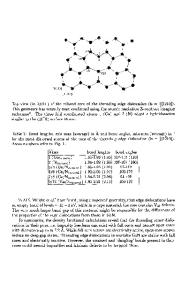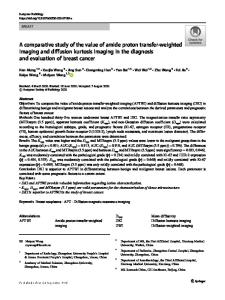Proton Transfer in Monoclinic Zirconia: A Theoretical Study
- PDF / 227,761 Bytes
- 6 Pages / 612 x 792 pts (letter) Page_size
- 86 Downloads / 278 Views
1177-Z01-07
Proton Transfer in Monoclinic Zirconia: A Theoretical Study Yves A. Mantz and Randall S. Gemmen U.S. Department of Energy, National Energy Technology Laboratory, 3610 Collins Ferry Road, Morgantown, WV 26507, U.S.A. ABSTRACT In solid oxide fuel cells, the mechanism of hydrogen oxidation is complex. During this process, protonated forms of monoclinic zirconia may be formed, motivating their study within the framework of density-functional theory (DFT). Using the HCTH/120 exchange-correlation functional, the monoclinic phase of zirconia is, correctly, predicted to be more stable than cubic or tetragonal polymorphs at 0 K, in agreement with previous theoretical results. Several local minima are identified of a proton in monoclinic zirconia, modeled using (up to) a 3×3×3 arrangement of unit cells, in which the proton is bonded to one of the two available oxygen atom types, O1 or O2. The lowest energy structure of the proton bonded to O1 is favored by 0.39 eV compared to that of the proton bonded to O2. Based upon a vibrational analysis as well as finitetemperature Born-Oppenheimer molecular dynamic simulations, this preference of the proton for O1 is suggested to persist at fuel cell operating temperatures. INTRODUCTION Solid oxide fuel cells (SOFCs) are electrochemical devices that are a very promising technology for efficient, clean, and fuel-versatile energy conversion. In a typical cell operating between 770-1270 K, a fuel gas, such as molecular hydrogen, is oxidized at the anode, typically composed of a nickel-yttria (Y2O3)-stabilized zirconia (ZrO2) (abbreviated Ni-YSZ) cermet if the electrolyte is YSZ. The focus here is on a process of relevance to hydrogen oxidation in SOFCs. Electrochemical fuel oxidation can be described by different competing pathways [1-3]. For the case of molecular hydrogen as fuel, the first step is the adsorption and dissociation of molecular hydrogen on a catalytic nickel face, producing adsorbed hydrogen atoms. From there, two of the most likely pathways are spillover and interstitial hydrogen transfer. The former is confined to a line termed the three-phase boundary, consisting of fuel gas, anode, and electrolyte and can involve the migration of hydrogen atoms and/or oxygen-containing species [1]. During the particular process known as hydrogen atom spillover, an adsorbed hydrogen atom, Hads,Ni, migrates to an oxygen ion on the surface of YSZ, OYSZ2-, in a single charge-transfer step, forming a hydroxide ion, OHYSZ-: Hads,Ni + OYSZ2- → OHYSZ- + e-
(1)
The molecular level details of this process were the subject of theoretical work [4]. Spillover is less likely in the presence of impurity ridges or films at or near the three-phase boundary [5-7]. In addition to spillover, the mechanism of interstitial hydrogen transfer is acknowledged to be important [1,8,9]. This mechanism consists of (1) dissolution of adsorbed hydrogen atoms, forming interstitial hydrogen atoms in the nickel particle, Hi,Ni, (2) oxidation of the dissolved
hydrogen atoms, which can lead to a charge tr
Data Loading...











